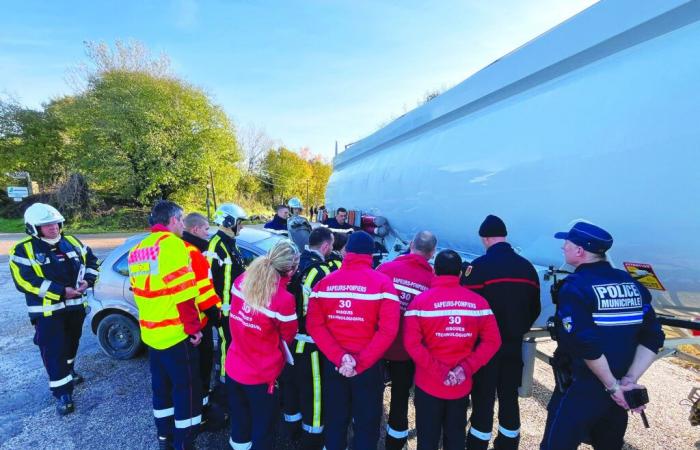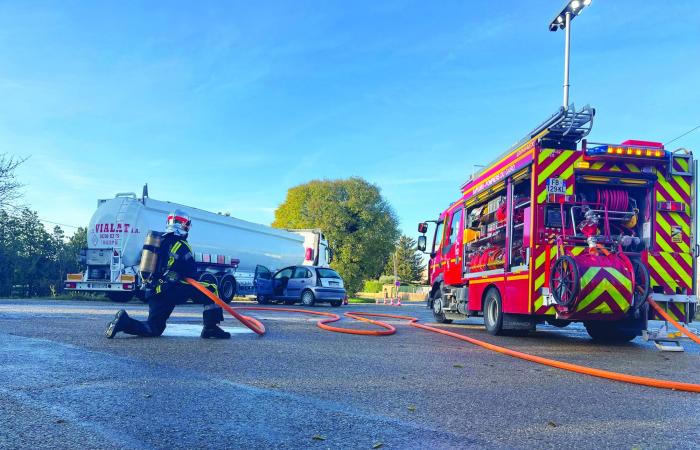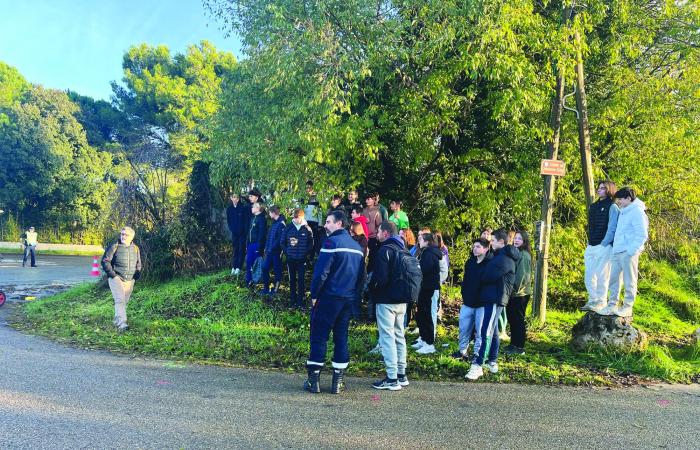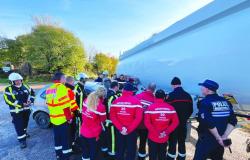In this morning of Tuesday November 26, 2024at the entrance to Chemin du Mas-des-Tailles, bluish rotating lights illuminate the surroundings of the Uzetian company Vialat, specializing in the moving and transport of chemicals.
Around ten fire engines, escorted by police officers, stormed the scene. All gathered around of a large tanker truckin which a gray car is embedded. The eyes are focused.
Considering the number of help mobilizedthe nature and location of the accident, the worst would be to be feared. But when the captain Alexis Piettehead of the Uzès barracks, approaches motorists who are a little too curious, it is with a smile that he explains to them: “You can move around, it’s an exercise. Normally, you wouldn’t have been able to pass”indicates the manager. Also observing this event, the students of the Defense class of the Jean-Louis-Trintignant college.
Gard firefighters: training, an imperative of the profession
On site, volunteer and professional firefighters are therefore busy with today's training: intervention in the presence of chemicals. The scenario is as follows: at the end of the evening, an inattentive driver ends up in a tanker truck carrying several currently unknown chemicals.

He is still inside the vehicle, a product is leaking from one of the truck's reserves. It is now up to the emergency services to place the driver in a safe place and to secure the premises.
Quickly, a protocol is set up. After the intervention of the “common core” (first firefighters on site, ambulance, etc.), the driver is quickly taken to safety and the security perimeter deployed. “This action was possible because the teams were not in the presence of a flammable leak. It is liquid argon, a gaseous product at -80°C, which can cause asphyxiation in a closed environment. Luckily, we are outside, but even if it’s an exercise, here, with this truck outing, the chemical risk is very real.”describes for his part the captain Cécile Dusserresupervising the operation alongside the Lieutenant Émilie Chambonetspecialized in the issue of chemicals.
The driver now safe, the surroundings locked, several vehicles from the Mobile Chemical Intervention Cell (Cmic) take over (read below). Heavily equipped, after consulting documentation and consultations, they managed to stop the leak after placing an orange tarpaulin to prevent the argon from spreading. End of exercise. Time for the report.
“It’s a chance to practice in an urban environment, the teams did well despite a few details to adjust. Training is obligatory in our profession”concludes Lieutenant Colonel Florent Légerhead of the Vallée-du-Rhône group.
For the rest of the day, the training group went to practice on a second vehicle with another container.








